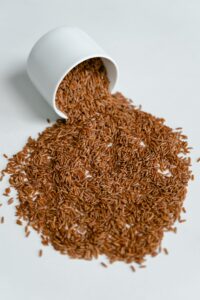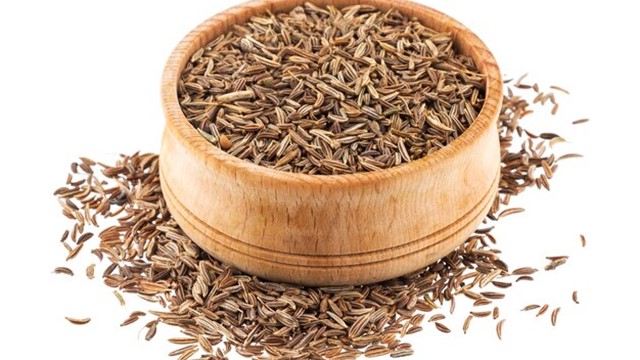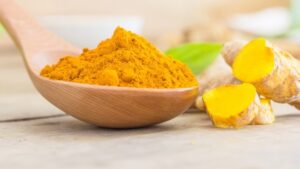Cumin seeds, derived from the Cuminum cyminum plant, boast an ancient heritage dating back centuries. Originating from the Mediterranean and Egypt, these tiny oblong seeds have held a cherished place in global cuisines for millennia
Spices are the essence of culinary traditions worldwide, and among them, cumin seeds stand out for their distinctive flavor and numerous health benefits. These tiny seeds, derived from the Cuminum cyminum plant, have been an integral part of global cuisines for centuries, contributing not only to taste but also to holistic well-being. Let’s dive deeper into the fascinating world of cumin seeds, exploring their history, culinary uses, health benefits, and more.

Varieties
Here’s an exploration of the various varieties of cumin seeds:
Varieties of Cumin Seeds

White Cumin Seeds (Cuminum cyminum)
Description: White cumin seeds are the most commonly found variety and widely used in culinary applications globally. They feature a warm, earthy flavor with a slightly nutty undertone. Culinary Usage: Integral to Indian, Latin American, Middle Eastern, and Mediterranean cuisines, white cumin seeds are versatile and used in both whole and ground forms. They form a part of curry powders, spice blends, and various savory dishes, adding depth and aroma.

Black Cumin Seeds (Bunium bulbocastanum or Nigella sativa)
Description: Often confused with black cumin seeds, true black cumin seeds belong to a different plant species (Bunium bulbocastanum) or are sometimes referred to as “black seed” (Nigella sativa). These seeds have a darker hue and a distinctly different taste compared to white cumin seeds. Culinary Usage: In certain regional cuisines, black cumin seeds are used sparingly and possess a more intense flavor. They are commonly used in pickling, bread-making, and some spice blends, especially in the Indian subcontinent and the Middle East.

Amber Cumin Seeds
Description: Amber cumin seeds, also known as Iranian cumin or Shahi Jeera (Carum carvi), are smaller and darker than white cumin seeds. They have a slightly sweeter and milder taste. Culinary Usage: Often used in Persian and Northern Indian cuisines, amber cumin seeds impart a subtle yet distinct flavor to rice dishes, bread, and certain spice blends. They are sometimes used in place of white cumin for their unique taste profile.

Spanish Cumin Seeds
Description: Spanish cumin seeds (also known as Mediterranean cumin) are native to the Mediterranean region and closely related to white cumin seeds. They have a flavor profile similar to white cumin but might have subtle variations due to regional differences. Culinary Usage: Found in Spanish and Mediterranean cuisines, these cumin seeds are used in various dishes, including stews, soups, and meat-based recipes, contributing to the region’s culinary diversity.

Wild Cumin (Bunium persicum)
Description: Wild cumin, also known as black cumin or Kala Jeera, is distinct from both white and black cumin seeds. These seeds have a more intense and slightly bitter taste compared to other cumin varieties. Culinary Usage: Predominantly found in Persian and Central Asian cuisines, wild cumin seeds are used sparingly due to their strong flavor. They are often included in rice dishes, soups, and some spice blends for their unique aromatic profile.

Egyptian Cumin
Description: Egyptian cumin seeds are quite similar to the white cumin seeds, possessing a warm and slightly bitter taste. Culinary Usage: These seeds are commonly used in Egyptian cuisine, adding flavor to dishes such as ful medames (stewed fava beans) and various traditional recipes, contributing to the country’s culinary heritage.
Each variety of cumin seed brings its own unique flavor nuances to culinary creations, allowing for diverse and distinctive tastes across different cuisines and cultural dishes. Understanding these differences can greatly impact the flavor profile of your recipes, providing an opportunity to explore and experiment with the captivating world of cumin seeds.
Culinary Uses and Versatility
Cumin seeds are incredibly versatile in the culinary world, offering a distinctive flavor and aroma that enhances a wide array of dishes. Here’s an exploration of their culinary uses and versatility:
Culinary Uses of Cumin Seeds
- Flavor Enhancer
- Aromatic Profile: Cumin seeds possess a warm, earthy, and slightly nutty flavor with hints of citrus and pepper. Their distinct aroma adds depth and complexity to dishes.
- Whole Cumin Seeds vs. Ground Cumin
- Whole Seeds: When used whole, cumin seeds are often tempered in hot oil or ghee to release their essential oils and impart their flavors to the dish.
- Ground Cumin: Ground cumin seeds offer a more concentrated flavor and are commonly used in spice blends, marinades, and rubs.
- Global Culinary Applications
- Indian Cuisine: Integral to Indian cooking, cumin seeds are a fundamental part of curry powders, garam masala, and many regional dishes. They’re used in tempering for dals, vegetables, and rice dishes, lending a rich aroma.
- Latin American and Mexican Cuisine: In Mexican and Latin American cuisines, cumin seeds are essential in seasoning for tacos, enchiladas, salsas, and mole sauce, contributing to the distinctive flavors of these dishes.
- Middle Eastern and Mediterranean Cuisine: Widely used in Middle Eastern cooking, cumin seeds flavor dishes like hummus, falafel, and kebabs, adding depth to the cuisine’s savory profile.
- Spice Blends
- Garam Masala: Cumin seeds are a key ingredient in this popular Indian spice blend, harmonizing with other spices like cardamom, cloves, and cinnamon.
- Curry Powders: They form the base of many curry powders, complementing turmeric, coriander, and chili for rich, aromatic curries.
- Tempering Technique
- Tadka/Tempering: Cumin seeds are often used in the traditional Indian tempering method called “tadka,” where they are briefly fried in hot oil or clarified butter along with other spices to release their flavors before being added to dishes like lentils, vegetables, or rice.
- Roasted and Ground Cumin
- Enhanced Flavor: Dry-roasting cumin seeds intensifies their flavor profile. The roasted seeds, when ground, create a more robust and smoky taste, perfect for marinades, spice rubs, and seasoning blends.
- Pairings and Complements
- Vegetarian and Meat Dishes: Cumin seeds complement both vegetable-based and meat-centric dishes, adding depth to soups, stews, sauces, and marinades.
- Rice and Grains: They are often used to flavor rice dishes, couscous, quinoa, and other grains, infusing them with a warm and aromatic essence.
- Beverages and Infusions
- Cumin Tea: Boiling cumin seeds in water to make a tea-like infusion is believed to aid digestion and is consumed for its potential health benefits.
- Snacks and Condiments
- Roasted Cumin Snack: Roasted cumin seeds can be sprinkled on snacks, salads, or yogurt for a flavorful crunch.
- Chutneys and Sauces: Ground cumin seeds are used in various chutneys, sauces, and dressings to enhance their taste.
Cumin seeds’ versatility lies in their ability to seamlessly blend with various ingredients and cuisines, offering a distinct and delightful flavor profile that elevates dishes across the globe. From humble lentil preparations to intricate spice blends, cumin seeds remain an indispensable ingredient in kitchens worldwide, contributing their unique essence to diverse culinary creations.
Health Benefits and Nutritional Value
Cumin seeds not only add flavor to dishes but also offer numerous health benefits due to their rich nutritional profile. Here’s an overview of the health benefits and nutritional value of cumin seeds:
Health Benefits of Cumin Seeds
Digestive Health
- Aiding Digestion: Cumin seeds are renowned for their digestive properties. They contain compounds that stimulate the secretion of digestive enzymes, aiding in better digestion and reducing symptoms of bloating, gas, and indigestion.
Rich in Antioxidants
- Antioxidant Properties: Cumin seeds are rich in antioxidants like flavonoids, phenolic compounds, and essential oils. These antioxidants help neutralize harmful free radicals, reducing oxidative stress and lowering the risk of chronic diseases.
Anti-inflammatory Effects
- Potential Anti-inflammatory Properties: Some studies suggest that components in cumin seeds have anti-inflammatory effects, potentially reducing inflammation markers in the body. This property may be beneficial in managing inflammatory conditions.
Potential Anti-cancer Properties
- Anticancer Effects: Certain compounds in cumin seeds have shown promising anti-cancer properties in laboratory studies. These compounds may have inhibitory effects on cancer cell growth, although more research in human studies is required to confirm these effects.
Source of Nutrients
- Rich in Iron: Cumin seeds are a good source of iron, which is essential for the production of hemoglobin and red blood cells, aiding in the transport of oxygen throughout the body.
- Other Nutrients: They also contain beneficial nutrients like manganese, calcium, magnesium, phosphorus, and vitamins A, E, and B-complex, contributing to overall health and well-being.
Nutritional Value of Cumin Seeds (Per 1 tablespoon, or around 6 grams)
- Calories: Approximately 22 calories
- Protein: Around 1 gram
- Fat: Roughly 1.3 grams (mainly healthy unsaturated fats)
- Carbohydrates: About 2.6 grams
- Fiber: Nearly 0.6 grams
- Iron: Approximately 1.4 milligrams (around 17% of the daily recommended intake)
- Manganese: Roughly 0.2 milligrams (around 10% of the daily recommended intake)
- Calcium, Magnesium, Phosphorus: Small amounts contributing to daily intake
Ways to Incorporate Cumin Seeds for Health Benefits
- Culinary Uses: Incorporate cumin seeds into your cooking by adding them to various dishes, such as soups, stews, curries, and roasted vegetables, to benefit from their digestive properties and rich flavor.
- Cumin Tea: Prepare a cumin tea by boiling cumin seeds in water. This infusion may aid digestion and provide potential health benefits due to its antioxidant content.
- Roasted Snack: Enjoy roasted cumin seeds as a healthy snack or add them to salads and yogurt for added flavor and nutritional benefits.
While cumin seeds offer numerous health benefits and nutritional value, it’s important to consume them as part of a balanced diet. Individuals with specific allergies or medical conditions should consult healthcare professionals before incorporating cumin seeds or supplements into their diet in large amounts.
Here’s a guide on how to incorporate cumin seeds into your culinary adventures:
Ways to Incorporate Cumin Seeds in Cooking
- Tempering/Tadka:
- Indian Cuisine: Heat oil or ghee, add whole cumin seeds, and let them splutter. Use this tempering to flavor lentil dishes (dal), vegetables, and rice.
- Spice Blends:
- Homemade Spice Mixes: Toast whole cumin seeds along with other spices like coriander, cardamom, cloves, and peppercorns. Grind them together to create your custom spice blends or masalas.
- Roasting and Grinding:
- Enhanced Flavor: Dry roast cumin seeds until fragrant, then grind them into a powder. This intensified flavor can elevate marinades, rubs, and curry pastes.
- Rice and Grain Dishes:
- Infusing Flavor: Add whole cumin seeds to the cooking water when preparing rice or other grains. It infuses the dish with a subtle aromatic essence.
- Soups and Stews:
- Depth of Flavor: Toss whole cumin seeds into soups, stews, and broths to enhance their flavors. They complement both vegetable and meat-based dishes.
- Roasted Snack:
- Healthy Snacking: Roast cumin seeds until crunchy, and sprinkle them with a pinch of salt for a nutritious and flavorful snack.
- Chutneys and Sauces:
- Balancing Flavor: Incorporate ground cumin seeds into chutneys, sauces, and dressings to add depth and balance to their taste profiles.
- Breads and Baked Goods:
- Flavorful Bread: Add whole or ground cumin seeds to bread doughs, rolls, or flatbreads for a delightful flavor addition.
- Meat and Vegetable Marinades:
- Infuse Marinades: Use ground cumin seeds in marinades for meats, tofu, or vegetables to impart a unique and aromatic taste.
- Salad Toppings:
- Crunchy Additions: Sprinkle roasted cumin seeds on salads or yogurt for an added layer of flavor and texture.
- Seasoning Vegetables:
- Vegetable Preparation: Use cumin seeds in stir-fries or while sautéing vegetables for a flavorful twist.
- Cumin Tea:
- Digestive Infusion: Boil cumin seeds in water, strain, and sip as a tea after meals to aid digestion.
- Experimentation and Fusion:
- Creativity in Cuisine: Don’t be afraid to experiment! Mix cumin seeds into dishes outside of their traditional usage to create innovative flavors.
Cumin seeds’ versatility allows them to seamlessly blend into a wide array of recipes, from traditional dishes to innovative culinary creations. Experimenting with different forms of cumin seeds—whole, ground, toasted—can unlock a diverse range of flavors and aromas, adding depth and character to your cooking.
Feel free to explore various cuisines and let the aromatic allure of cumin seeds guide your culinary journey. Whether it’s the comforting warmth of Indian curries, the zesty tang of Mexican salsas, or the subtle hint in Mediterranean dishes, cumin seeds offer a flavorful passport to an exciting culinary adventure!




